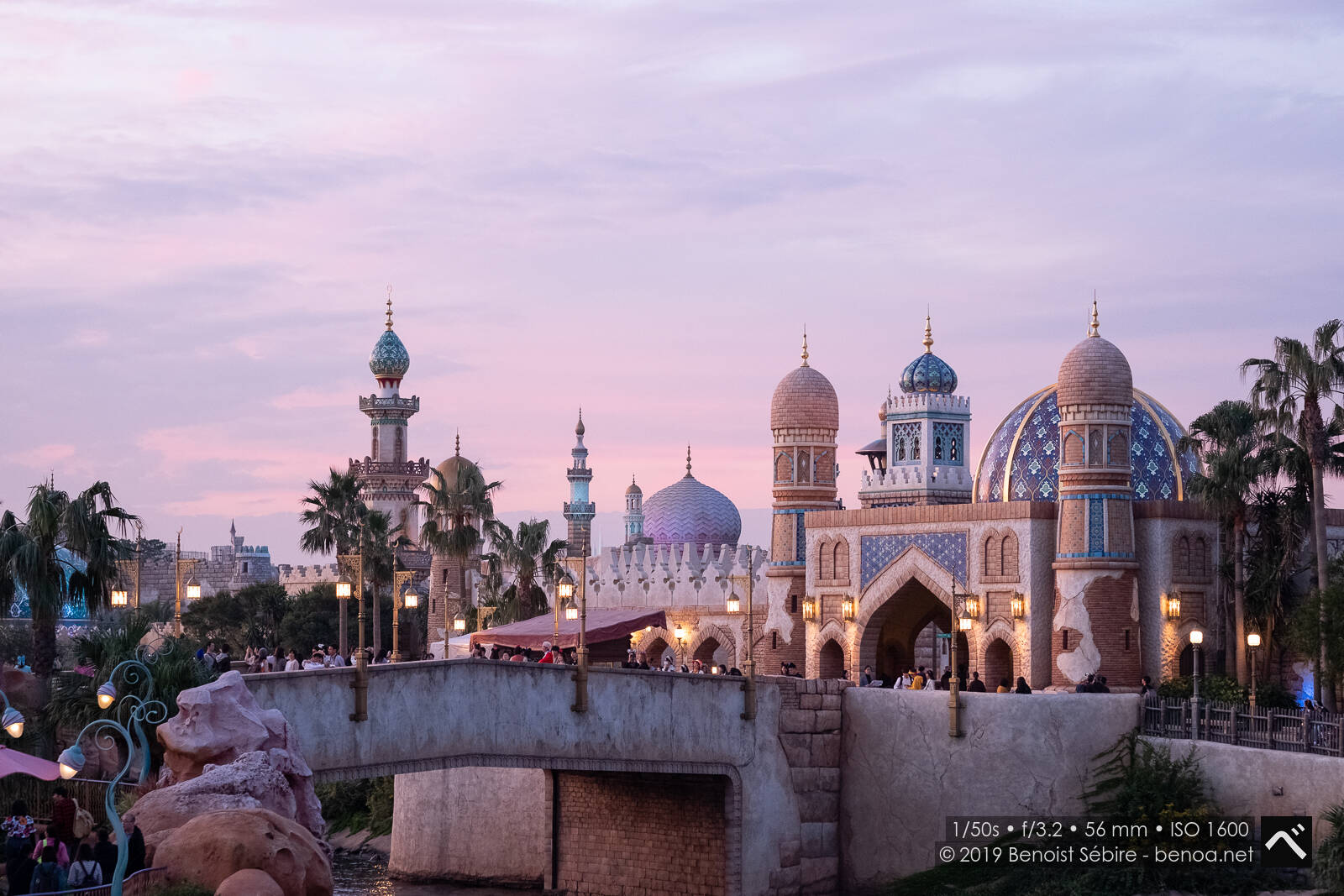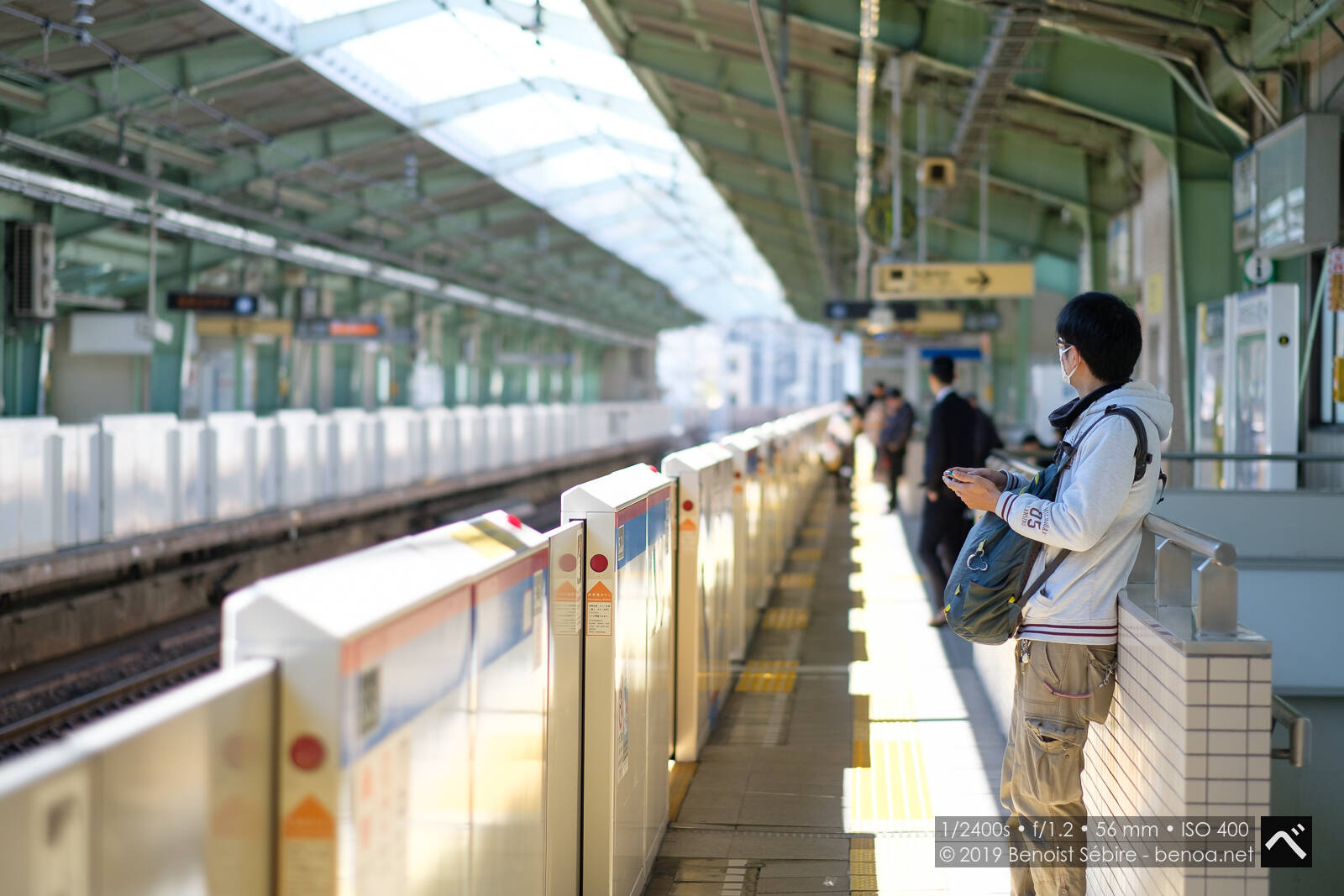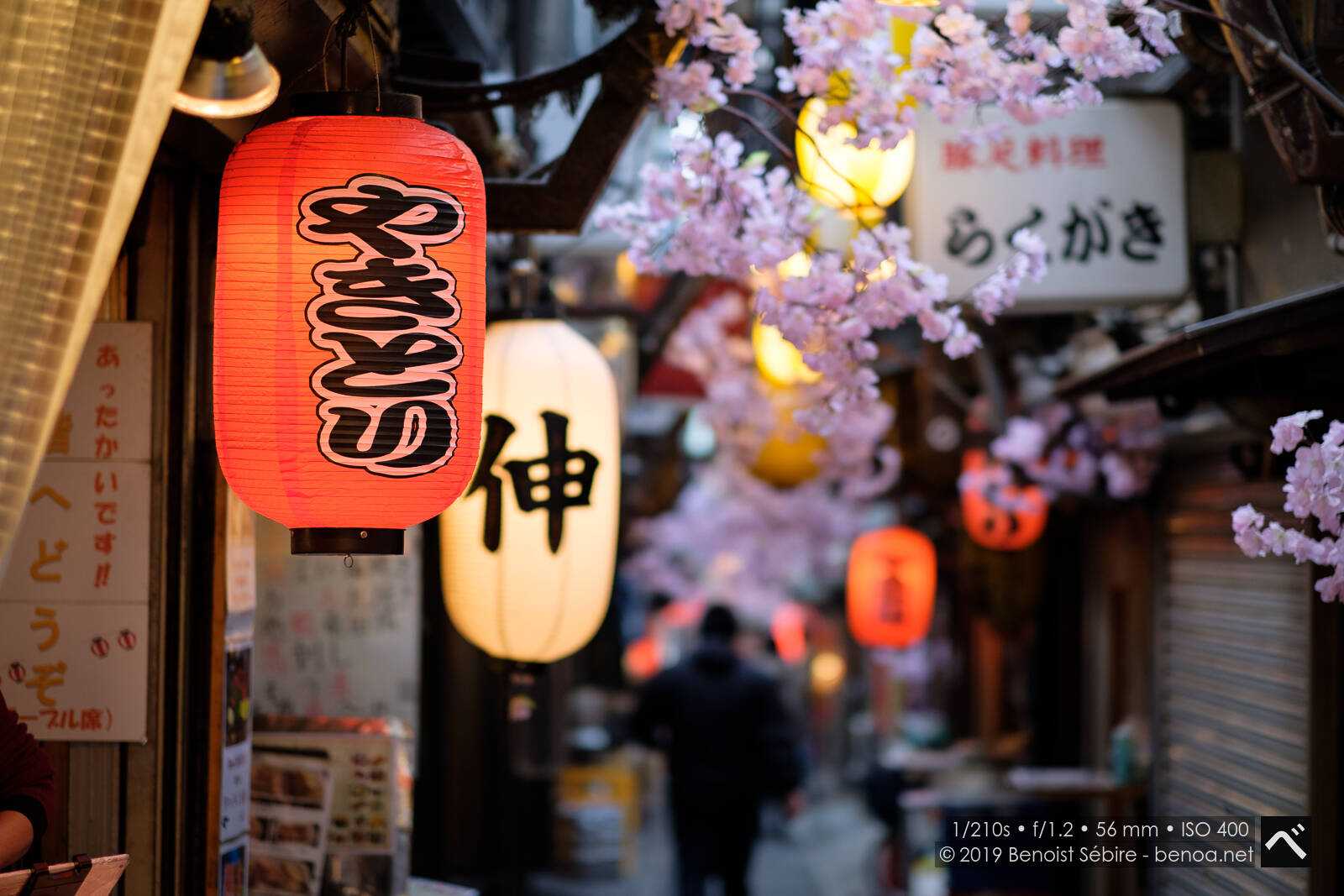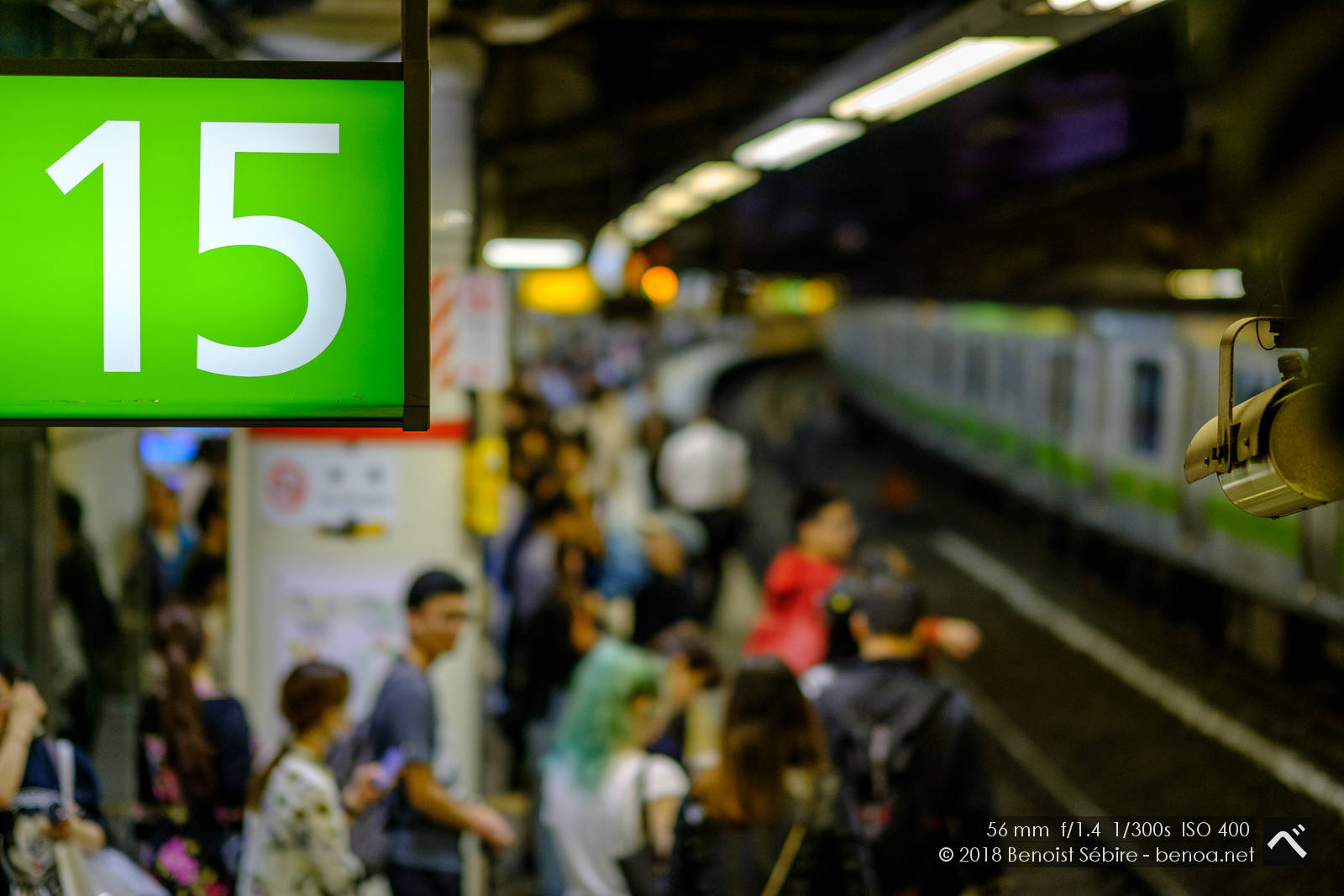Fujinon XF 56mm F1.2 Review
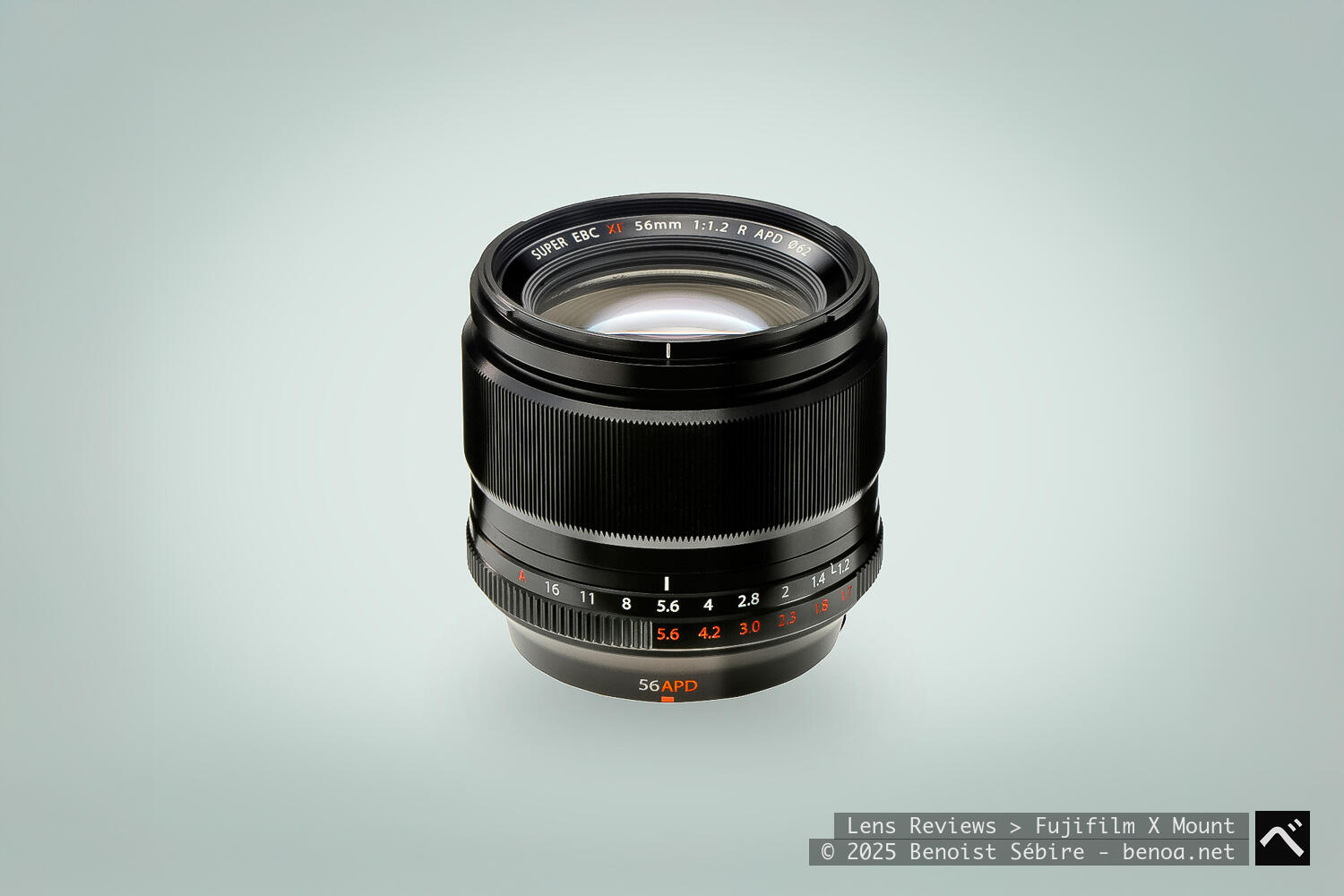
Released in 2014, the Fujinon XF 56mm f/1.2 R APD is a specialised version of the standard XF 56mm f/1.2 R, featuring an apodisation (APD) filter that enhances the smoothness of the bokeh. With an 85mm full-frame equivalent focal length, this lens is designed primarily for portrait photography, offering an ultra-fast aperture and a unique optical character. The APD version delivers some of the most refined background blur available in the Fujifilm lineup, though it comes with some trade-offs, particularly in autofocus performance.
Build and Design
The XF 56mm f/1.2 R APD shares the same high-quality build as its standard counterpart, featuring a metal construction that feels robust and premium. Weighing 405g, it is relatively compact for a fast portrait prime, making it easy to carry and handle.
The aperture ring moves in precise one-third stop increments, though unlike some newer Fujifilm lenses, it lacks an aperture lock. The filter thread size remains at 62mm, allowing easy use of ND and polarising filters. Unlike later Fujifilm lenses, this version does not have weather sealing, which means extra care is needed when shooting in challenging environments.
The key difference in design comes from the apodisation filter, a built-in radial neutral density filter that gradually darkens towards the edges. This feature enhances out-of-focus areas, producing a smoother, more gradual fall-off in the bokeh, particularly in the highlights. The APD effect is subtle but noticeable, offering a more refined look than the standard version.
Optical Performance
The XF 56mm f/1.2 R APD delivers stunning image quality, with excellent sharpness even when shot wide open at f/1.2. The apodisation filter works to create a bokeh effect that is exceptionally soft and pleasing, reducing the harsh edges that can sometimes appear in out-of-focus areas. This makes it particularly well-suited for headshots and portraits where subject isolation is key.
Colours and contrast are rich, with natural skin tones and strong micro-contrast, making this an ideal lens for professional portrait work. Chromatic aberrations are well controlled, though the APD filter slightly reduces light transmission, making the effective aperture closer to f/1.7 in terms of light-gathering capability. Despite this, the depth of field remains the same as a true f/1.2 lens.
One important limitation is that the APD filter slightly reduces sharpness in phase-detection autofocus areas, meaning that while the lens remains incredibly sharp, its autofocus performance is affected.
Autofocus Performance
One of the main drawbacks of the APD version compared to the standard XF 56mm f/1.2 R is autofocus speed. Due to the apodisation filter affecting contrast in phase-detection AF systems, autofocus is slower and less reliable, particularly in low-light conditions. While it remains usable for portrait photography where subjects are relatively static, it is not ideal for fast-moving subjects or action photography.
For those using manual focus, the lens provides a smooth and well-damped focus ring, and Fujifilm’s focus peaking and digital split image features make fine-tuning focus easy.
Handling and Versatility
The XF 56mm f/1.2 R APD is primarily a portrait lens, excelling in studio, wedding, and environmental portrait photography. The 85mm equivalent focal length offers excellent compression, making it flattering for facial features.
The lens is compact and light enough for handheld shooting, though the lack of image stabilisation means that a higher shutter speed is needed in lower light conditions. The APD effect makes it less versatile than the standard version for general photography, as it is specifically optimised for portraiture.
My main issue with Fuji lenses though is how they feel in the hand. The paint or coating they use has a slightly greasy or slippery texture, which I find unpleasant compared to for instance Canon.
Conclusion
The Fujinon XF 56mm f/1.2 R APD is a highly specialised portrait lens, offering some of the smoothest and most beautiful bokeh in the Fujifilm X system. Its apodisation filter enhances subject isolation, creating a softer and more refined background blur compared to the standard version.
However, the trade-offs include slower autofocus and reduced light transmission, which may make it less practical for everyday shooting. For those who prioritise the ultimate bokeh quality and work primarily with manual focus or controlled portrait environments, this lens is a unique and powerful tool.
For general users who need a fast portrait prime with better autofocus, the standard XF 56mm f/1.2 R or the newer XF 56mm f/1.2 R WR might be better choices. But for those seeking the absolute best in background rendering, the XF 56mm f/1.2 R APD remains one of Fujifilm’s most artistic and technically impressive lenses.
I would recommend getting the 90mm though. For me it was the better lens for portrait.
Strengths
- Incredibly smooth, elegant bokeh thanks to APD filter
- Fast f/1.2 aperture for shallow depth of field and low-light shooting
- Gorgeous color and tonal rendering
- Excellent build quality
- Ideal focal length for portraits
- Unique aesthetic signature compared to standard 56mm
Weaknesses
- Slower autofocus performance
- Reduced light transmission (T1.7 at f/1.2)
- No weather sealing
- More expensive than the standard version
- No optical image stabilization
Samples
Here are the latest photos I captured through my Fujinon XF 56mm f/1.2 R APD lens. These sample shots highlight the lens’s performance across different conditions, settings, and subjects. To view the complete collection of photos taken with this lens, follow the link.
